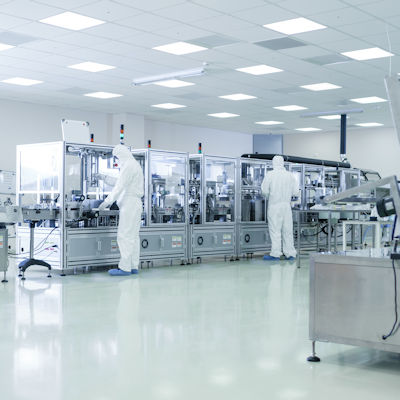March 8, 2021 -- As the battle against the deadly SARS-CoV-2 virus continues, researchers are relying on analytical laboratory techniques like chromatography to provide effective and efficient methods for characterizing the virus, as well as to analyze potential vaccines and anti-COVID-19 compounds.
Analytical instruments play a central role in the laboratory work centering around the SARS-CoV-2 virus, including the three main areas of COVID-19-related research -- vaccine development, therapeutics development, and diagnostic testing. To date, there are over 250 COVID-19 vaccine candidates under development and over 800 potential COVID-19 therapeutic compounds under investigation.
Chromatography is one of the essential technologies in this field, especially in the purification of biomolecules, including RNA. This laboratory technique relies on dissolved fluids (mobile phase) to carry an analyte of interest through a system with a fixed material (stationary phase). Differing affinities of molecules within the analyte will cause separation, thus allowing for preparation or analysis of the analyte.
Chromatography in vaccine development
Because SARS-CoV-2 is an RNA-based virus, RNA purification and analysis are critical for viral studies and the development of RNA-based therapeutics. RNA purification using liquid chromatography (LC) is conducted at higher pressure and temperature than normal LC separation in order to stimulate the denaturation process to remove protein complexes. A high temperature coupled with a binary solvent gradient will yield an effective RNA isolation while also preventing RNA degradation.
The purified viral RNA is then ready for further analysis at the structural level to understand how alterations affect its function, which is important for the vaccine and therapeutic development process. For instance, during vaccine development, LC instruments are employed to isolate the targeted messenger RNA (mRNA) and analyze the vaccine's efficacy.
mRNA vaccines, such as the authorized Pfizer-BioNTech and Moderna COVID-19 vaccines, are revolutionizing the vaccine development process due to their high efficacy and fast development time.
Chromatography to study SARS-CoV-2
Furthermore, LC is also used to analyze the spike protein in the SARS-CoV-2 virus. The spike protein is one of the coronavirus's unique characteristics, which allows the virus to bind and penetrate the host cell membrane. LC, combined with mass spectrometry (MS), is used to refine and analyze the spike protein to understand its structural function and develop therapies to target this particular characteristic.
Chromatography in therapeutics development
LC is also used in the analysis of therapeutic drugs to treat severe illness from COVID-19. LC-MS systems are widely employed to study the efficacy of repurposed small molecule drugs for COVID-19 treatment. LC-MS systems are utilized in the efficacy testing research for drugs including remdesivir, chloroquine, and lopinavir, to name a few. Based on results generated from LC-MS data, the U.S. National Institutes of Health (NIH) concluded that several of these products provide no clinical benefit to hospitalized patients.
So far, remdesivir is the only drug that has demonstrated in vitro activity against SARS-CoV-2 and is authorized by the FDA for COVID-19 treatment. LC-MS was used to quantify remdesivir in the blood plasma of COVID-19 patients and provided data to support the drug's efficacy as a SARS-CoV-2 treatment. Therefore, LC-MS will also be an essential instrument to validate other future COVID-19 therapies.
Chromatography in diagnostics
Aside from vaccine and treatment development, a recent study also developed a method to diagnose COVID-19 through breath by using gas chromatography (GC) coupled with ion mobility spectrometry (IMS). From the GC-IMS analysis, the study found that aldehydes (ethanal and octanal), ketones (acetone and butanone), and methanol are prevalent in breath samples of COVID-19 patients; this could serve as a potential COVID-19 diagnostic tool with around 80% accuracy.
Overall, chromatography is essential in various COVID-19 research efforts and has already proven its role in the war against the virus. Despite a pandemic-induced slowdown in many industries, COVID-19 related research applications buoyed demand for many chromatography products in 2020. This upward trend in the pharma/bio sector will likely continue throughout this year.
For a further dive into these market dynamics, the new 2021 Strategic Directions International global assessment report offers business insights and market forecasts on more than 80 laboratory technologies, including several individual forms of chromatography.
Ivan Gandayuwana is a market analyst at Strategic Directions International (SDi), the leading business intelligence firm in the highly specialized field of analytical and life science instruments.
Disclosure: ScienceBoard.net is a sister company of SDi.
Copyright © 2021 scienceboard.net








